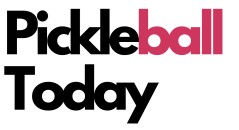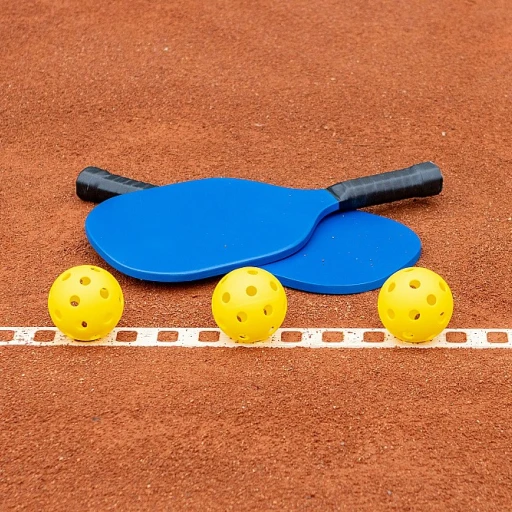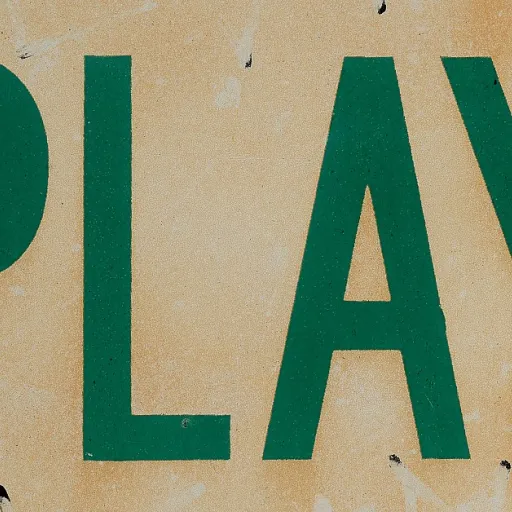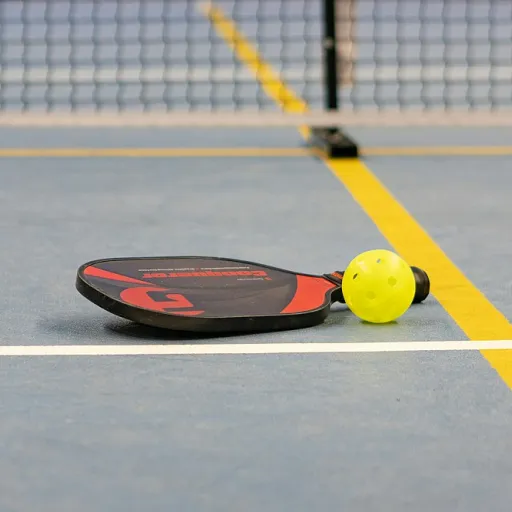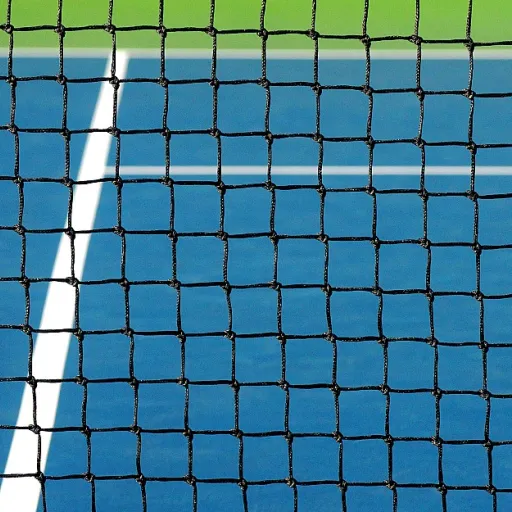
What is the Kitchen in Pickleball?
Defining the Kitchen in Pickleball
In the world of pickleball, the "kitchen" is a crucial concept that every player needs to understand. Officially known as the non-volley zone, the kitchen is a rectangular area on the court that extends 7 feet from the net on both sides. This zone plays a significant role in the game, influencing how players approach their shots and strategize their movements.
The kitchen rule is designed to prevent players from executing volleys too close to the net, which could give them an unfair advantage. When standing in the kitchen, players are not allowed to hit a volley, which is a shot where the ball is struck before it bounces. This rule encourages longer rallies and strategic play, as players must be mindful of their positioning and the timing of their shots.
Understanding the kitchen is essential for mastering pickleball. Players must be aware of their feet placement, as stepping into the kitchen while volleying results in a fault. This aspect of the game requires players to develop a keen sense of spatial awareness and control over their momentum.
For those new to pickleball, the kitchen might seem like a simple concept, but it has a profound impact on the dynamics of the game. As you delve deeper into the rules and strategies, you'll find that the kitchen is a pivotal element that shapes the way pickleball is played. To further explore the nuances of pickleball rules, you can check out this comprehensive guide on understanding lets in pickleball.
The Kitchen Rule Explained
Decoding the No-Volley Zone: A Fundamental Pickleball Rule
In pickleball, the kitchen rule is an essential component of the game, serving to maintain fair play and strategy on the court. The area commonly referred to as the kitchen is indeed a dedicated no-volley zone. This rule mandates players to adhere strictly to specific guidelines to avoid a fault while playing, fostering strategic gameplay and ensuring the balance of power across the court. Understanding the parameters of the no-volley zone is crucial. This is the area located within seven feet on both sides of the net. When a player is standing in this designated zone, they are prohibited from volleying, meaning they cannot strike the ball out of the air without letting it bounce first. This includes situations where a player's momentum might inadvertently carry them into the zone after making a shot. It is imperative for players to step back or ensure their feet do not touch this area prematurely during a volleying attempt. Several steps underscore this rule: if a player hits a ball while standing in the kitchen or if their momentum leads them into this zone following a kitchen volley, this results in a fault. Consequently, the opposing team earns a point, emphasizing the importance of awareness regarding one’s positioning on the court at all times. For further details on the kitchen rule's impact during gameplay, mastering the nuances of keeping score in pickleball can provide additional insights that enhance both strategy and understanding. Consider exploring more at mastering the pickleball scoreboard to better grasp the intricacies of scoring, which ties closely with understanding faults and point awards in relation to kitchen rule violations.Why the Kitchen Rule Matters
The Importance of Staying Out of the Kitchen
The kitchen rule plays a significant role in maintaining the distinctive dynamics of pickleball, making it essential for players to understand why it matters. Serving to enhance strategic play and prevent straightforward volley dominance, the kitchen, also known as the non-volley zone, introduces a unique challenge that diversifies the sport.
1. Preserving Fairness: By limiting volleys, the kitchen rule ensures every player has a fair chance to react to shots instead of giving a decisive edge to those positioned near the net. This enhances the level of strategic thinking and positioning on the court.
2. Promoting Tactical Depth: The restriction against kitchen volleying forces players to refine their shots and movements. Instead of relying solely on net play, players must think several steps ahead, crafting their approach and focusing on finesse. This adds layers of complexity and enjoyment to the matches.
3. Encouraging Physical Safety: The rule also prevents dangerous situations from arising during enthusiastic net play, especially when players might inadvertently step into the kitchen while engaging in fast-paced exchanges. By minimizing the likelihood of overreaching and collisions, the kitchen rule upholds the sport’s emphasis on enjoyment and safety.
The kitchen rule is integral to pickleball because it demands respect for the established boundaries that define the court's dynamics, and adds to the overall enjoyment and tricky skill set required. Understanding this rule helps players make the most out of their competitive and casual play. To learn more about the impact and strategic elements of pickleball, explore the tranquility of pickleball.
Common Misconceptions About the Kitchen
Misunderstandings in the Pickleball Kitchen
Navigating the kitchen rules in pickleball can lead to confusion and mistakes, often due to common misconceptions among players. Ensuring clarity is crucial to avoid committing faults during play.- Misinterpreting Kitchen Area Restrictions
- Some players assume they can volley the ball from anywhere on the court without considering whether their momentum will carry them into the kitchen. Remember, all volleying must happen outside the kitchen area to follow the rules correctly.
- Confusion About Feet Placement
- A frequent misunderstanding involves the placement of players' feet. If stepping into the kitchen is required, make sure the ball has already bounced on their side, as standing inside before the ball bounces leads to a fault.
- Misjudging the Volley Zone
- Be aware of the kitchen's boundaries. Incorrectly judging the volley zone might lead players to execute a kitchen volley, causing a penalty. Proper understanding of this zone is vital for precise shots.
- Believing in "Follow-Through" Exemptions
- Some mistakenly think it's acceptable if only the follow-through steps into the kitchen, but touching it during a volley still constitutes a rule breach.
Tips for Navigating the Kitchen Rule
Mastering the Art of Staying Out of the Kitchen
Navigating the kitchen rule in pickleball is essential to keep the game flowing smoothly and avoid any unnecessary faults. Here are some practical tips to help players handle the kitchen area:- Awareness of Position: Always be mindful of where your feet are on the court. Keep a mental check on your position, especially when you're close to the net and the kitchen zone. Stepping into the kitchen inadvertently during an intense game can lead to an unexpected fault.
- Control Your Momentum: When volleying, be cautious of your momentum. It's easy to carry forward after hitting a volley ball. Try to control your body's movement to avoid stepping into the no-volley zone after a shot.
- Practice Precision: Regular practice will develop the precision needed to hit volleys while maintaining your position. Consider drills that emphasize volleys and shots from near the kitchen line to build confidence.
- Avoid the Temptation to Linger: Ensure you're not standing in the kitchen area during play unless the ball bounces there first. Understand the nuances of the rules kitchen, as the slightest misstep lands as a fault.
- Communication with Your Partner: In doubles, clear communication with your partner is crucial. Coordinate who will take the kitchen shots or how to cover the net without infringing on the kitchen rule.
The Kitchen Rule in Competitive Play
Mastering the Kitchen Rule in Competitive Play
In competitive pickleball, understanding and mastering the kitchen rule is crucial for players aiming to excel. The kitchen, or the non-volley zone, is an area that can significantly impact the outcome of a match. Here’s how the kitchen rule plays out in a competitive setting:
- Strategic Positioning: Players must be acutely aware of their positioning on the court. Standing in the kitchen area is only permissible when the ball has bounced. This means players need to be quick on their feet, ready to step out of the kitchen after a volleying attempt.
- Maintaining Momentum: The momentum of a player can lead to faults if not controlled. After hitting a volley, players must ensure their momentum doesn’t carry them into the kitchen, as this would result in a fault. This requires a balance of agility and control.
- Anticipating Opponent’s Shots: Anticipation is key. Players should be prepared for the ball to bounce in the kitchen, allowing them to step into the zone and make a strategic shot. This anticipation can turn the tide in a competitive match.
- Communication and Teamwork: In doubles play, effective communication between players is vital. Understanding who will take the shot when the ball bounces in the kitchen can prevent confusion and errors.
Competitive players often practice drills specifically focused on the kitchen rules to enhance their reflexes and decision-making skills. By mastering the nuances of the kitchen rule, players can gain a competitive edge, turning potential faults into winning shots.
